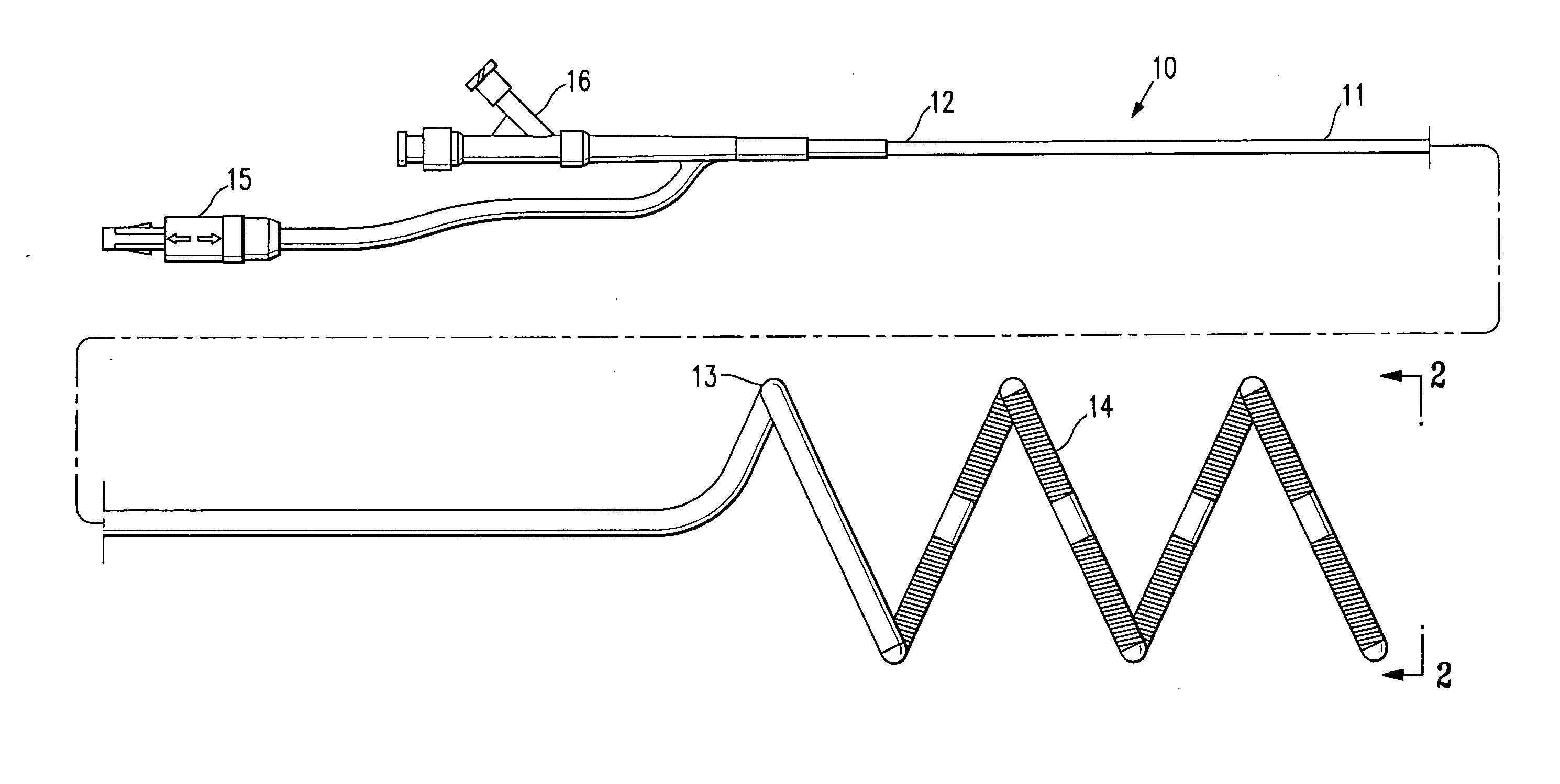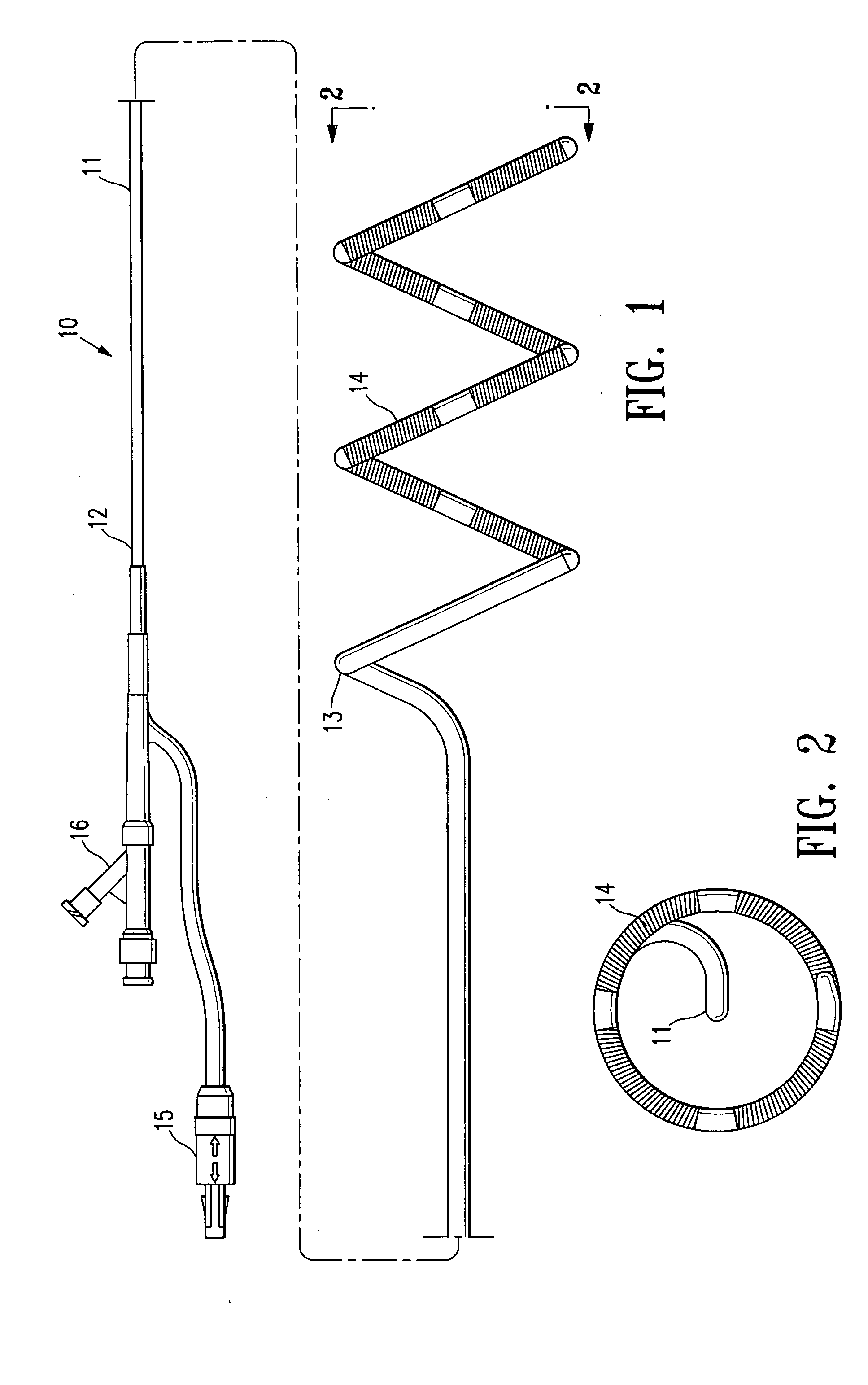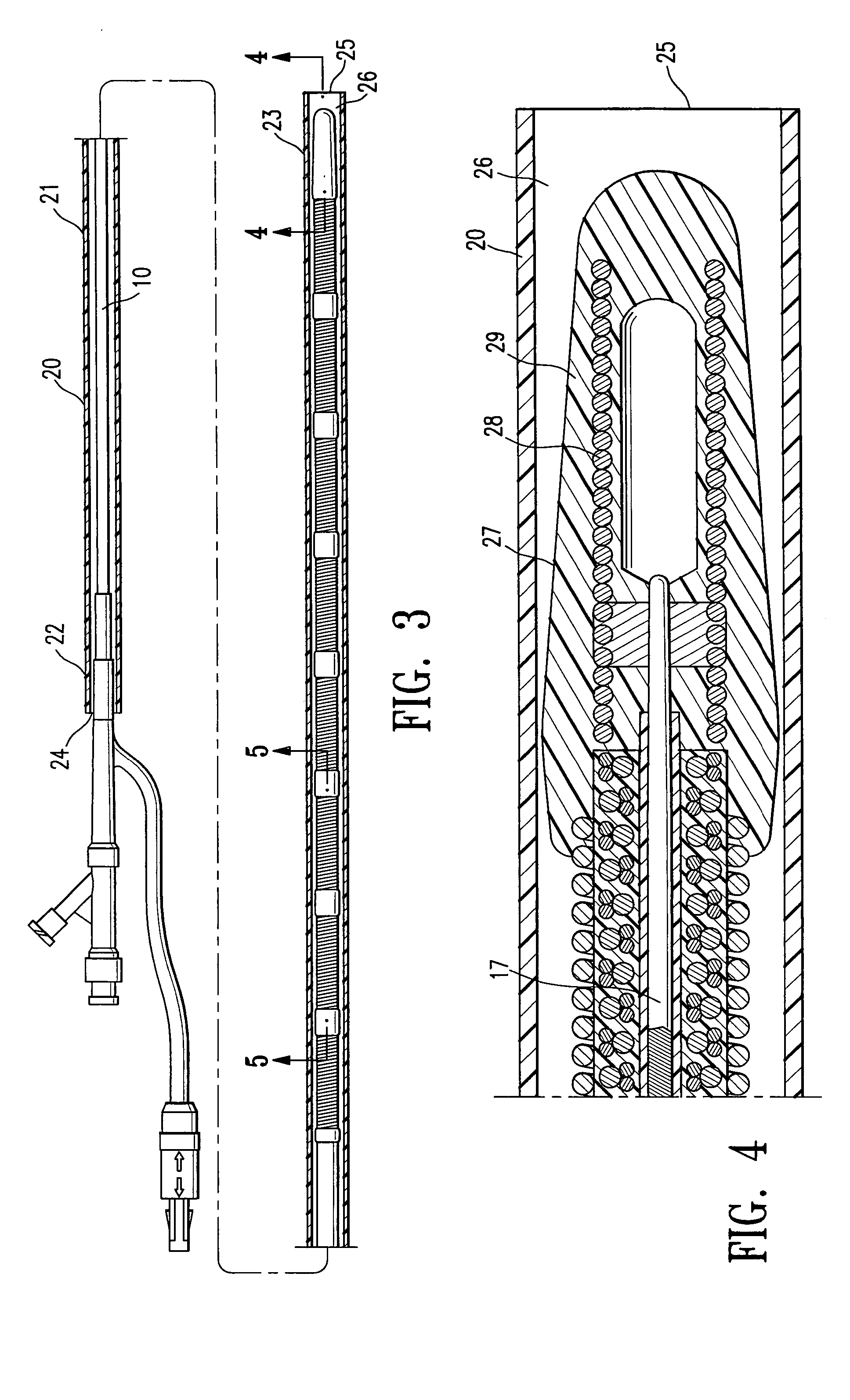Helically shaped electrophysiology catheter
a catheter and electrophysiology technology, applied in the field of cardiac arrhythmia treatment, can solve the problems of traumatic surgical technique and unacceptable to a large number of patients, and achieve the effects of improving lesion formation, low profile configuration, and convenient deploymen
- Summary
- Abstract
- Description
- Claims
- Application Information
AI Technical Summary
Benefits of technology
Problems solved by technology
Method used
Image
Examples
Embodiment Construction
[0026]FIG. 1 illustrates one embodiment of the EP device 10 of the invention, generally comprising an elongated shaft 11 having a proximal shaft section 12, a helically shaped distal shaft section 13, and a plurality of electrodes 14 on the distal shaft section 13. An electrical connector 15 and an adapter 16 are on the proximal end of the device. FIG. 2 illustrates a transverse cross section of the distal end of the device 10 shown in FIG. 1, taken along lines 2-2.
[0027]FIG. 3 illustrates the EP device 10 within a guiding catheter 20 for introduction and advancement within the patient. The guiding catheter generally comprises an elongated shaft 21 having a proximal end 22, a distal end 23, a port 24 in a proximal shaft section, a port 25 in a distal shaft section, and a lumen 26 extending within the shaft to the port in the distal shaft section. As illustrated in FIG. 3, the helically shaped distal shaft section of the EP device 10 is reversibly deformed from the helical configura...
PUM
 Login to View More
Login to View More Abstract
Description
Claims
Application Information
 Login to View More
Login to View More - R&D
- Intellectual Property
- Life Sciences
- Materials
- Tech Scout
- Unparalleled Data Quality
- Higher Quality Content
- 60% Fewer Hallucinations
Browse by: Latest US Patents, China's latest patents, Technical Efficacy Thesaurus, Application Domain, Technology Topic, Popular Technical Reports.
© 2025 PatSnap. All rights reserved.Legal|Privacy policy|Modern Slavery Act Transparency Statement|Sitemap|About US| Contact US: help@patsnap.com



